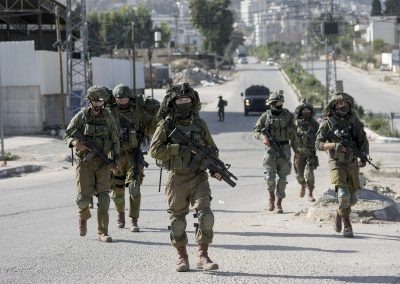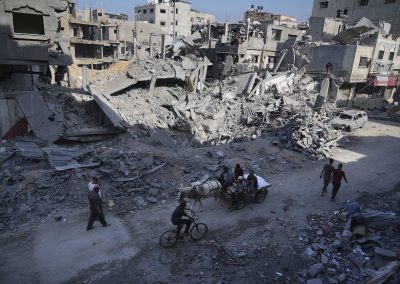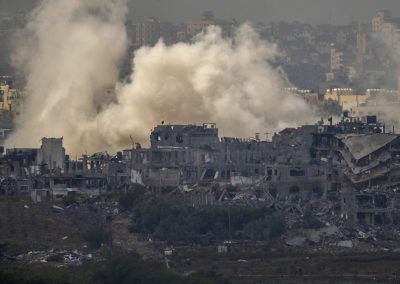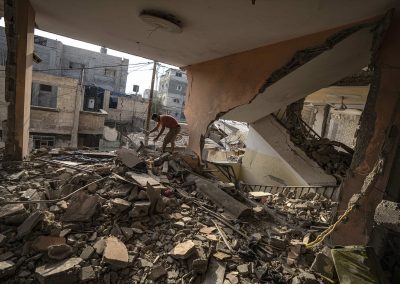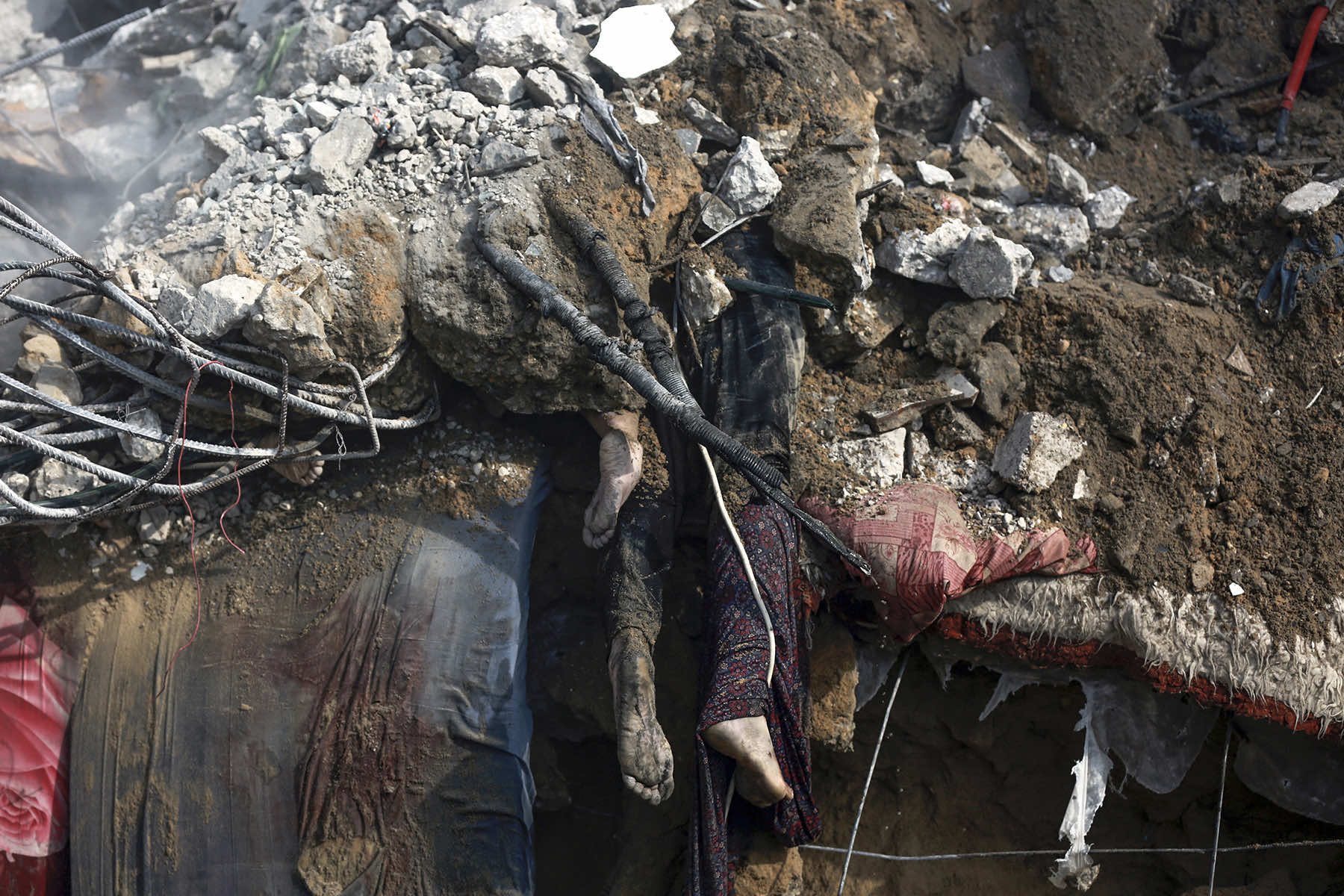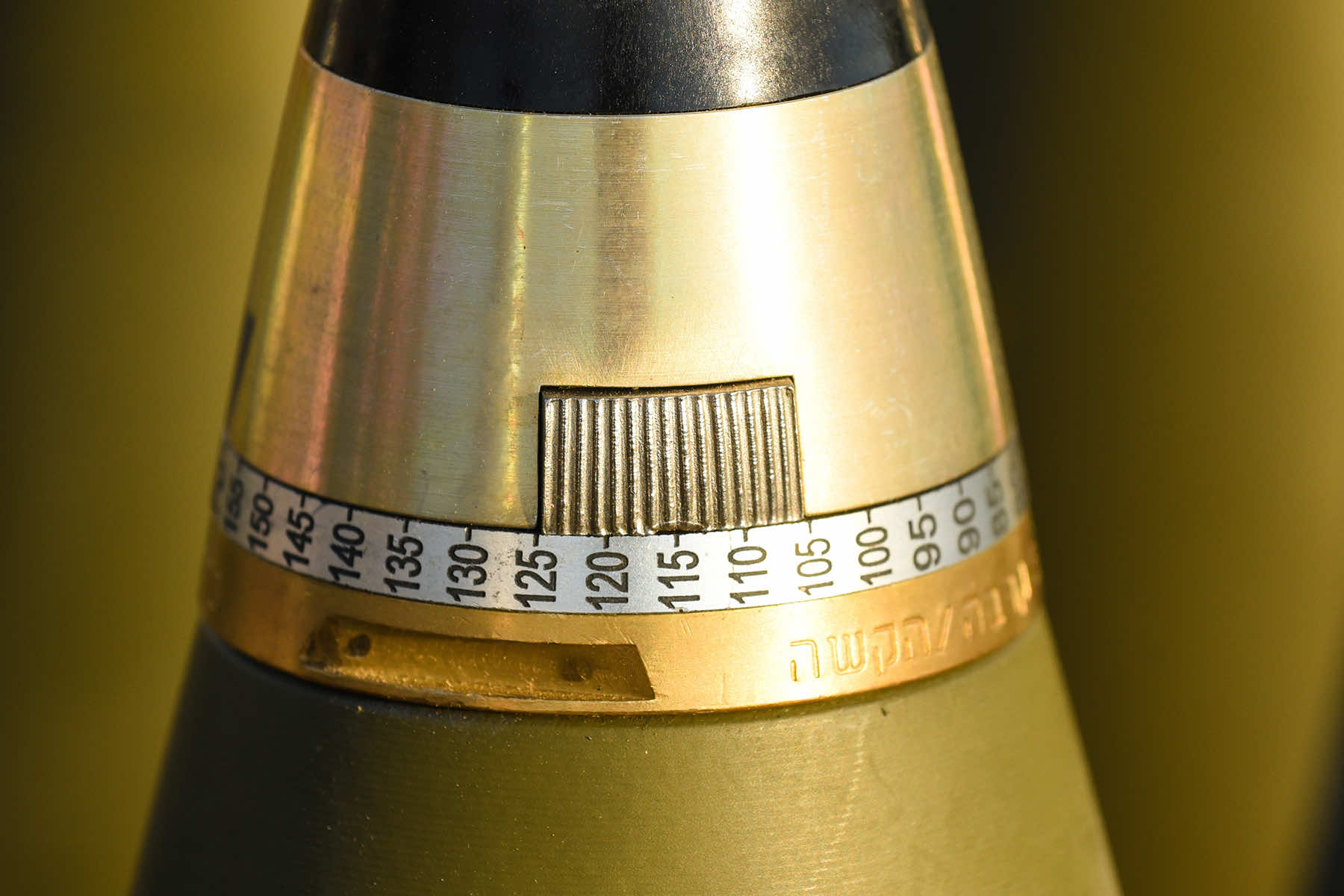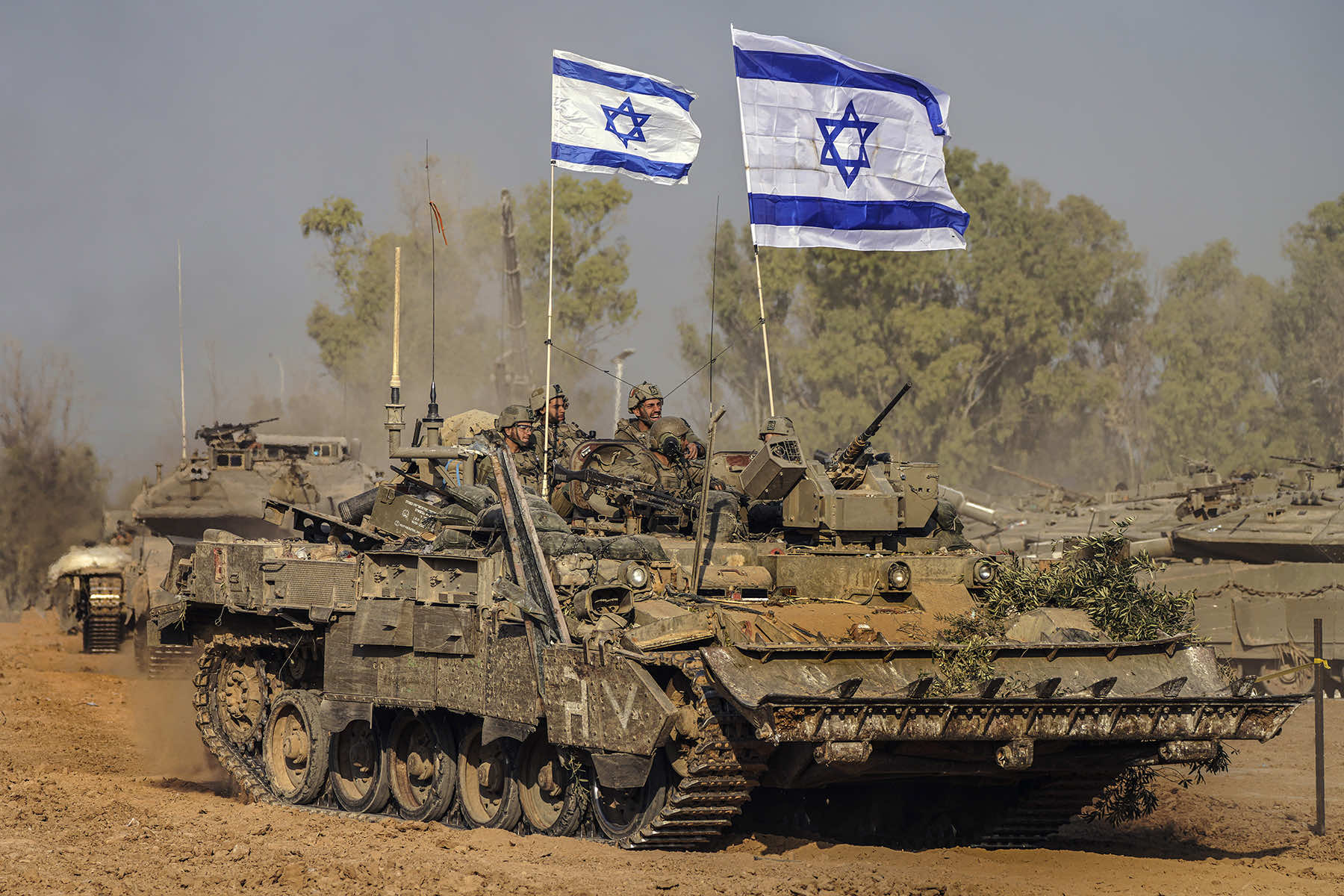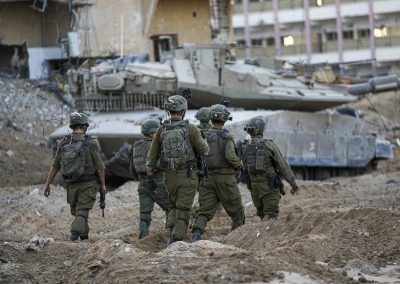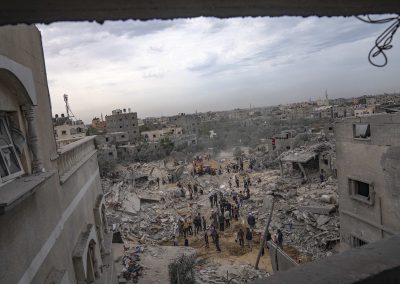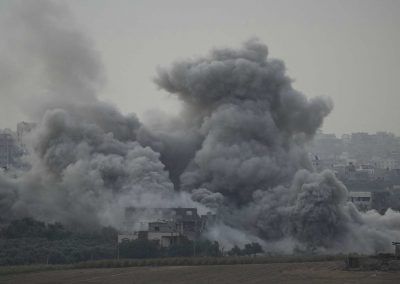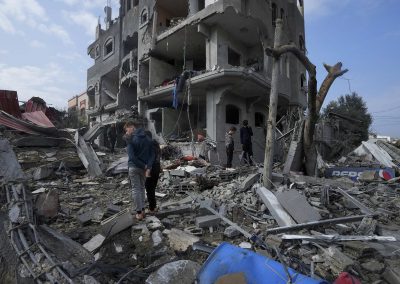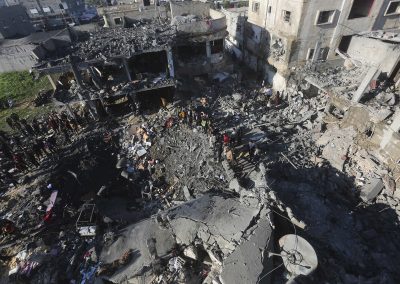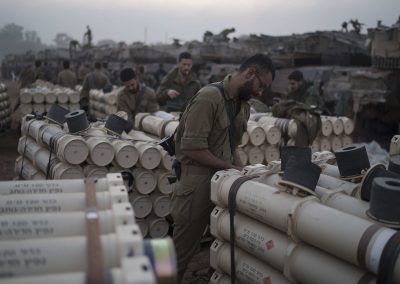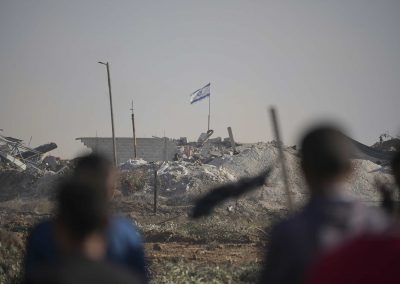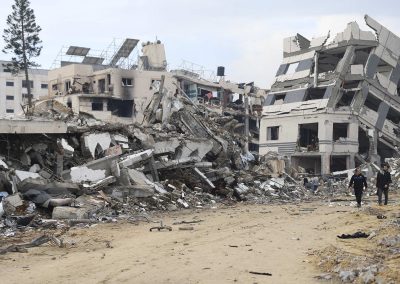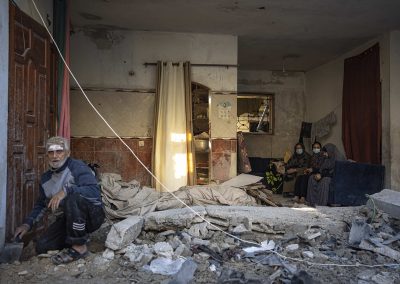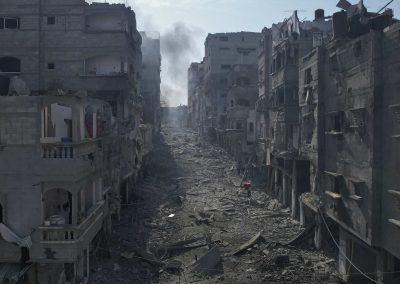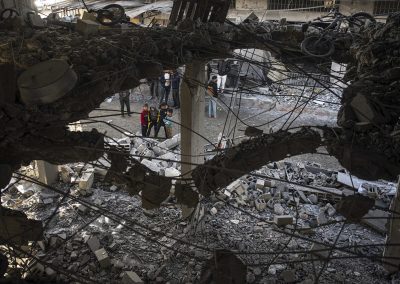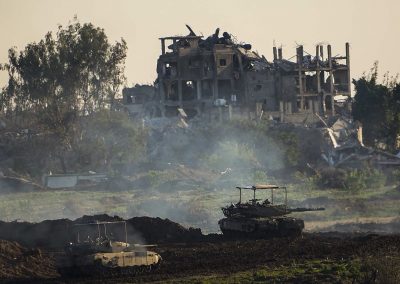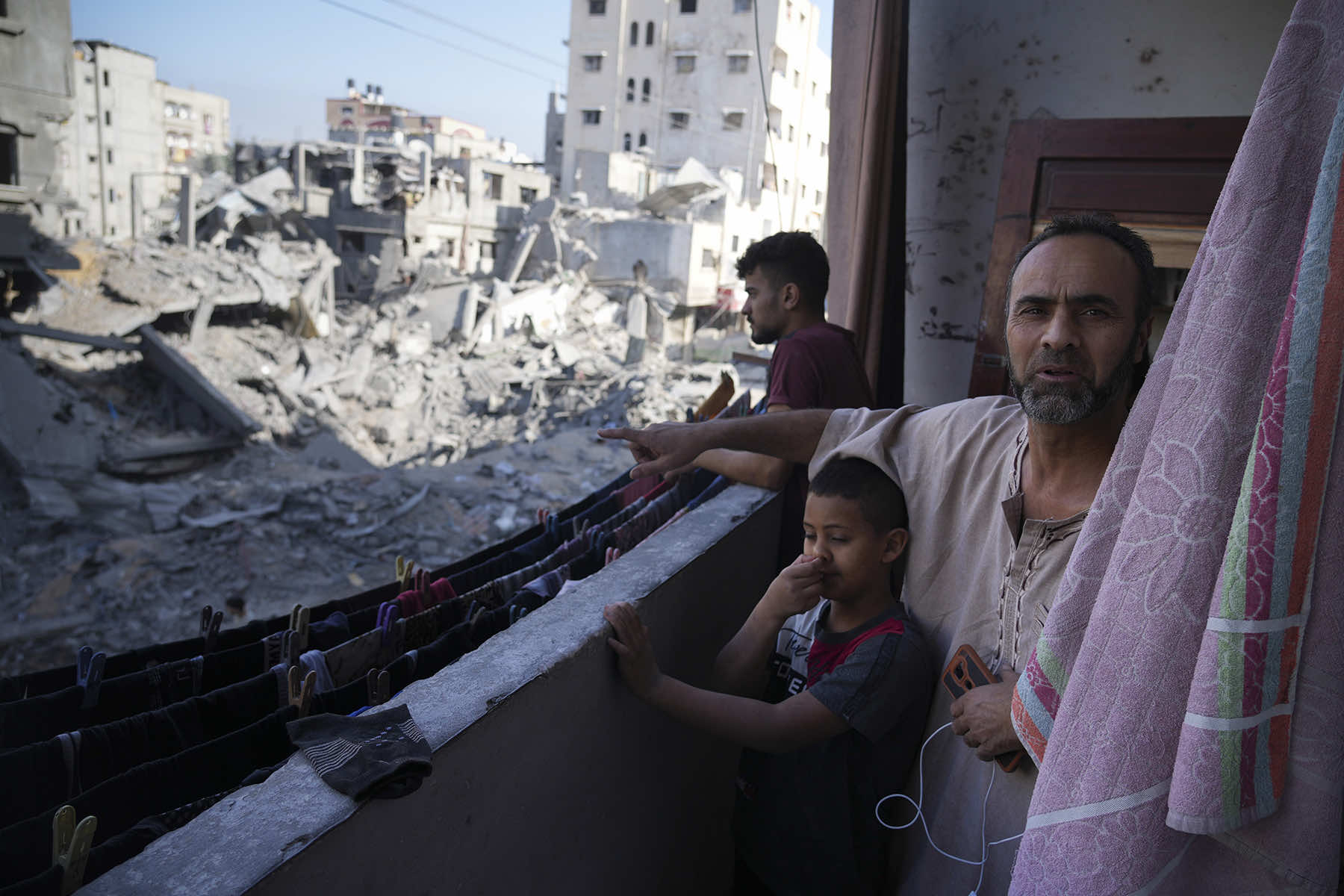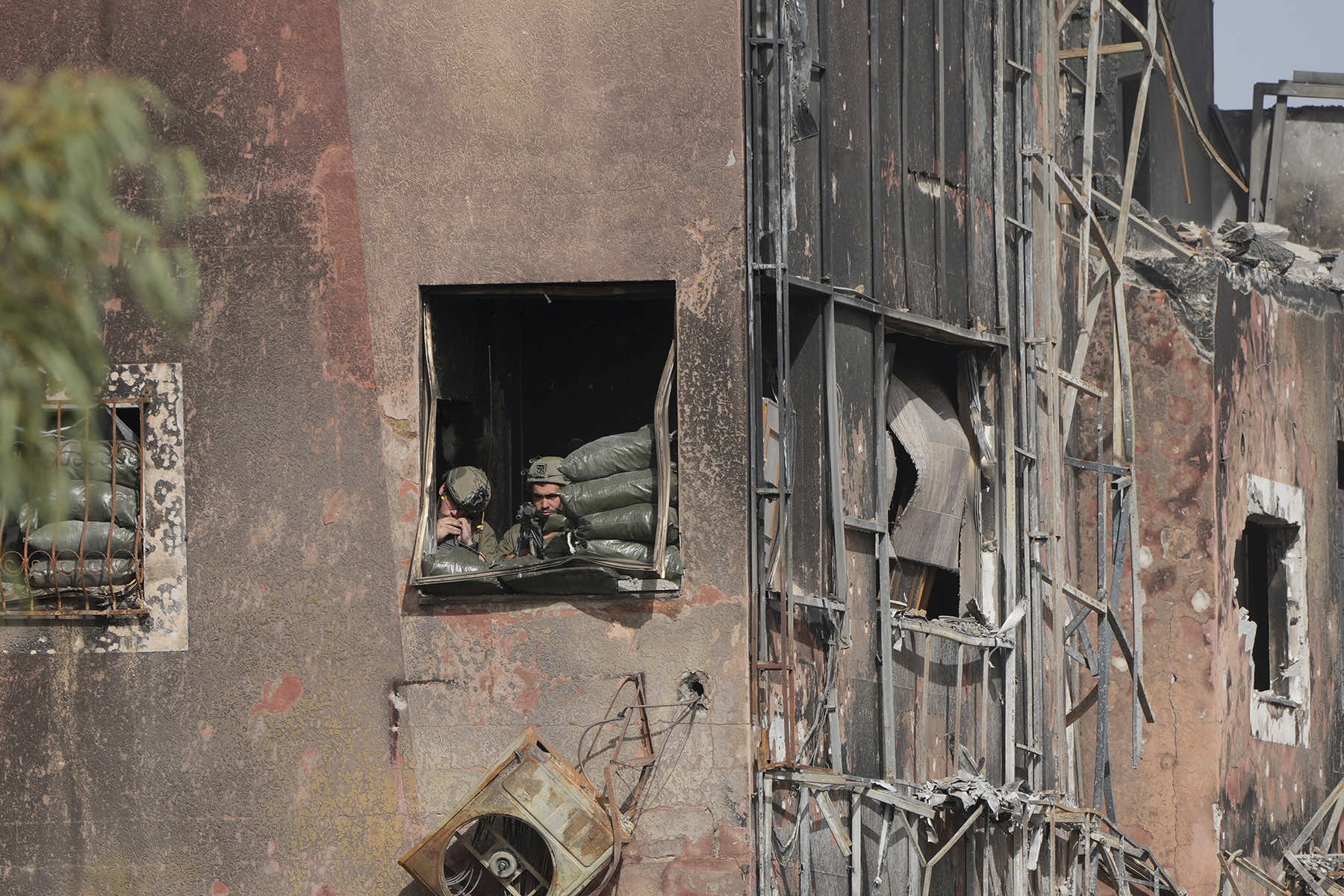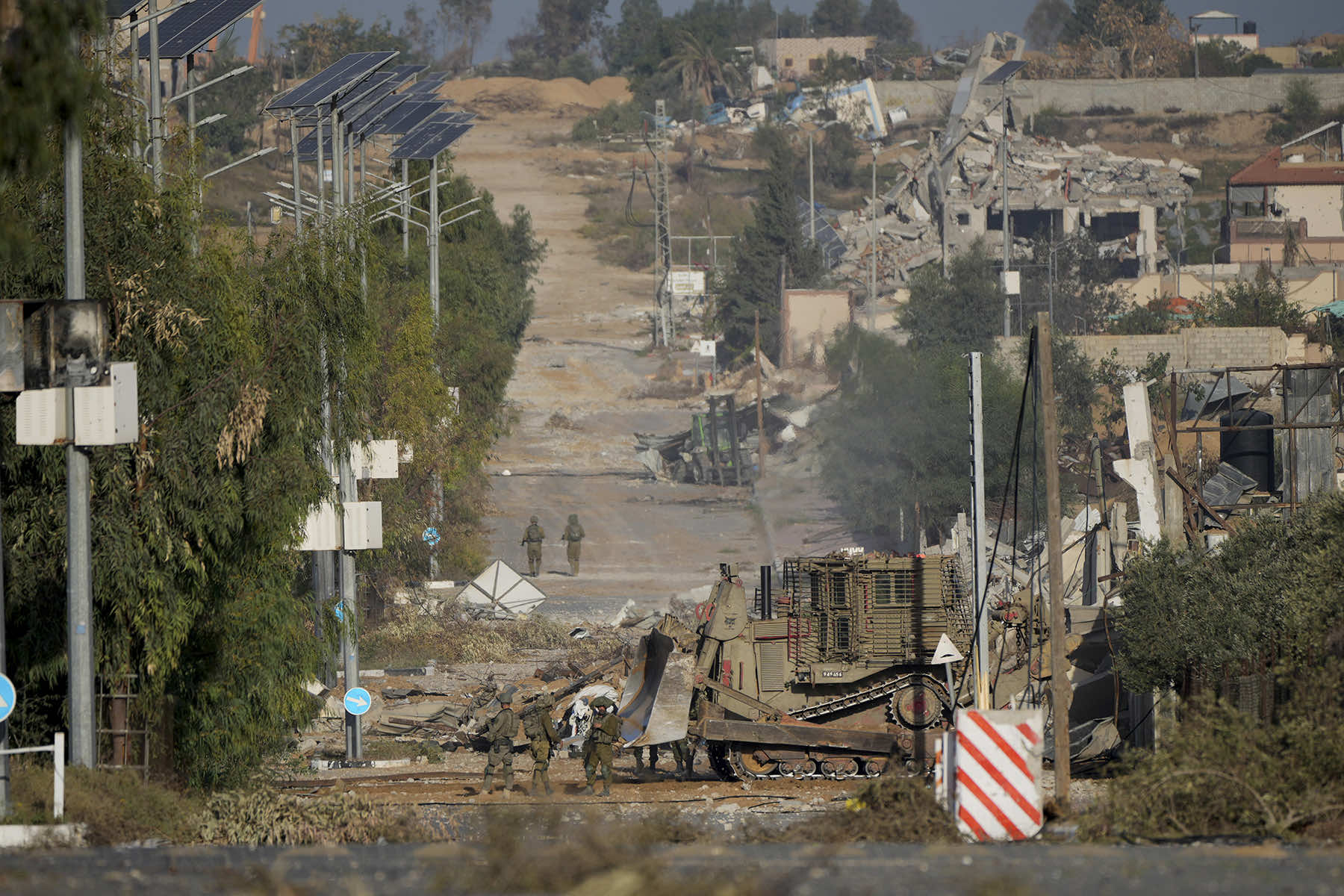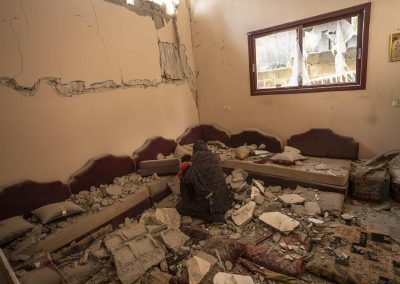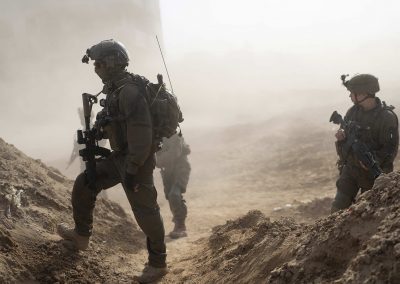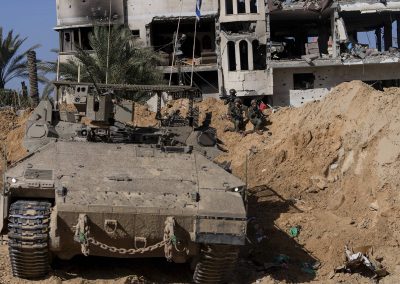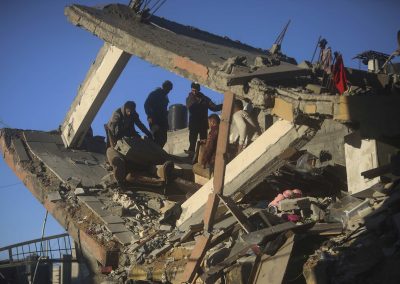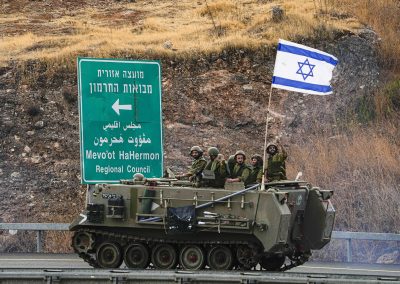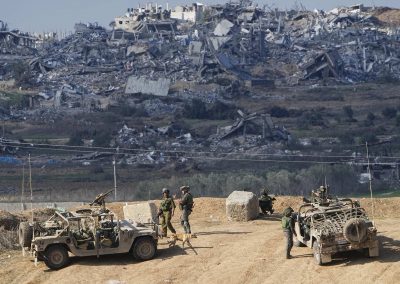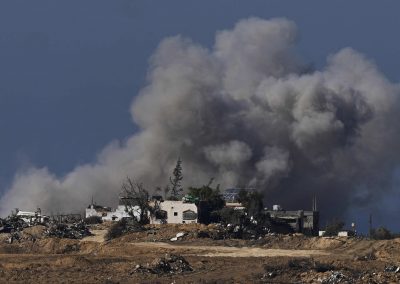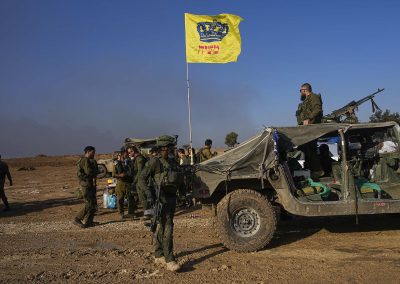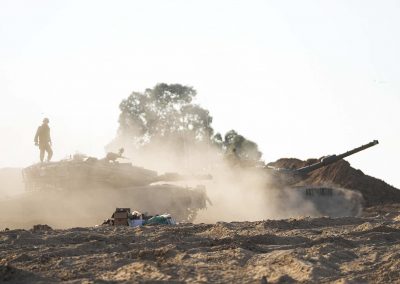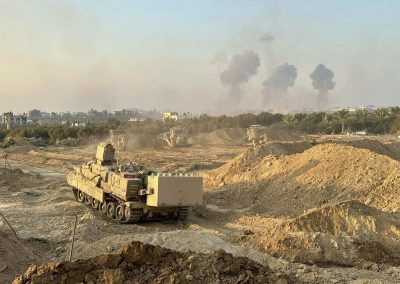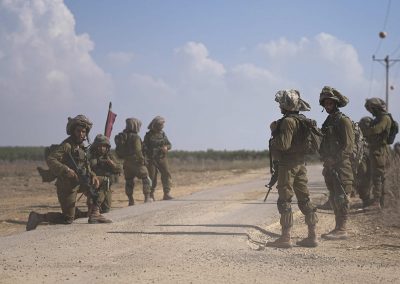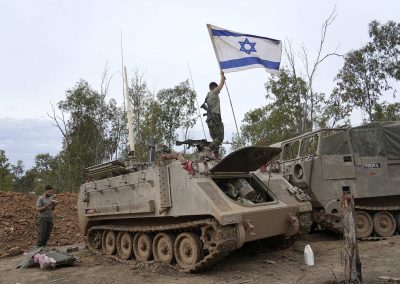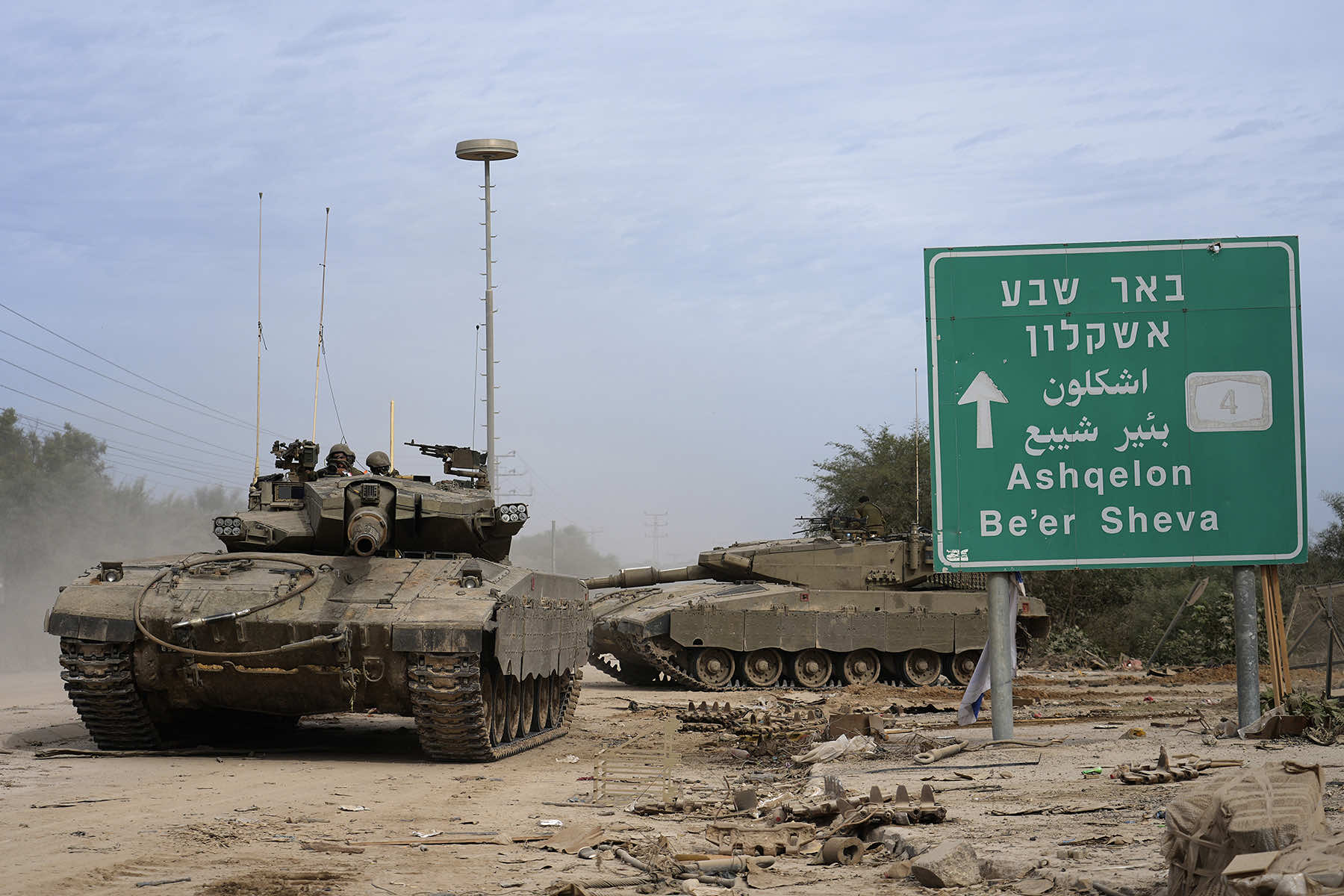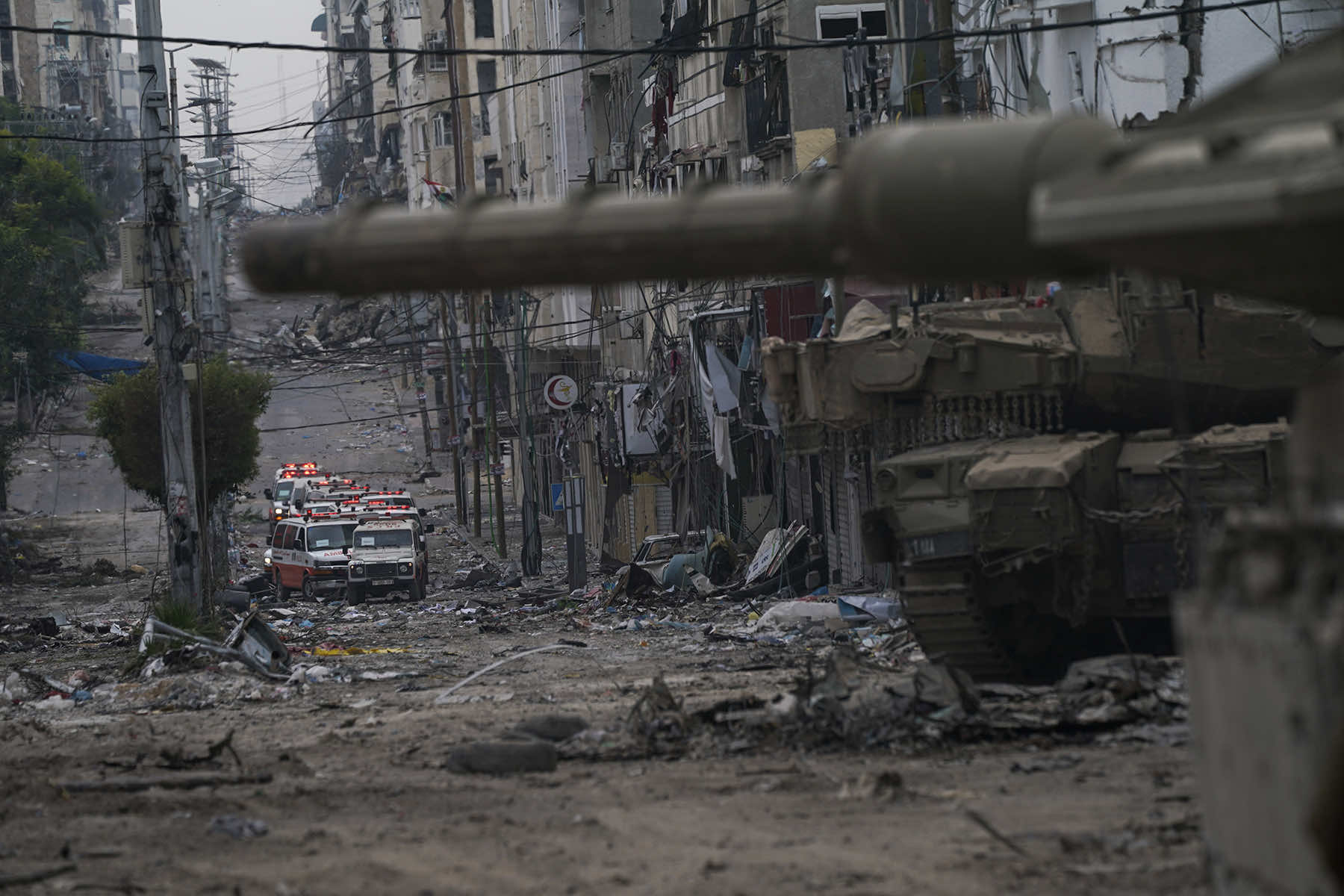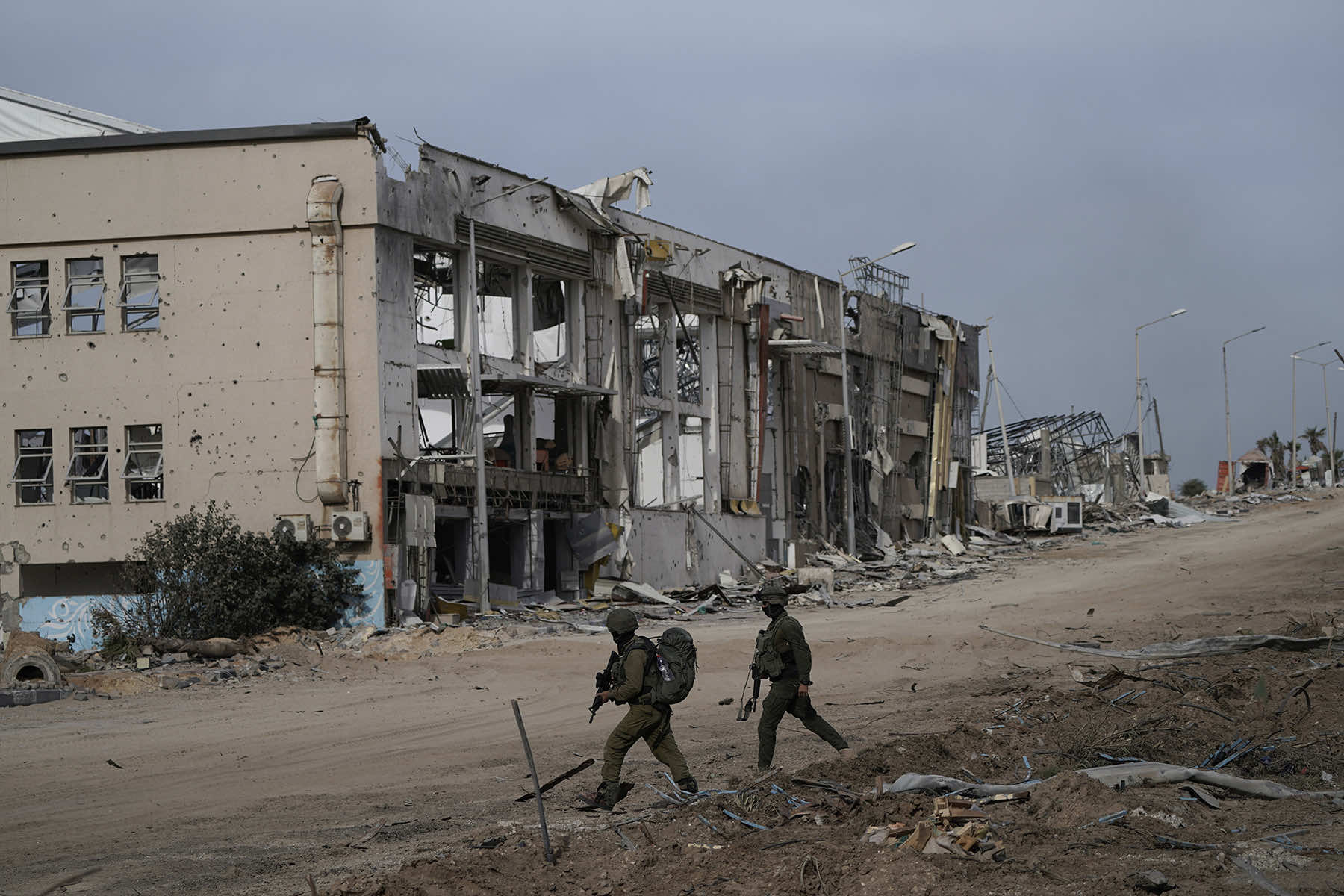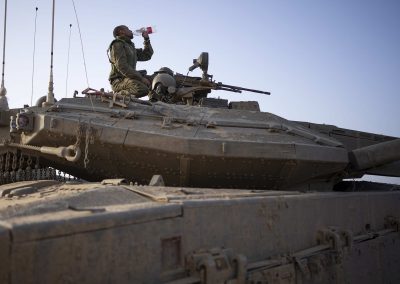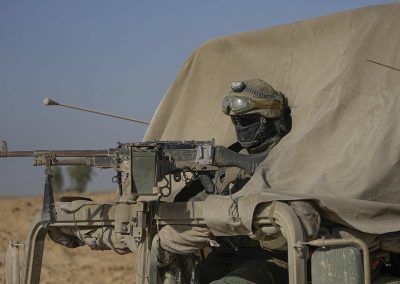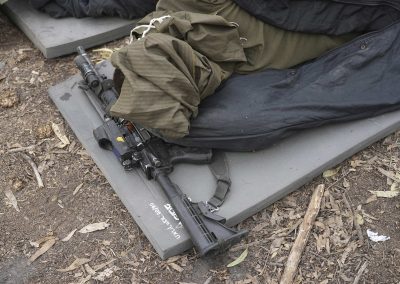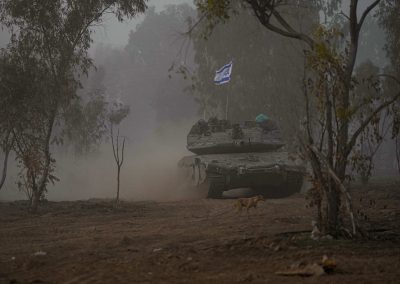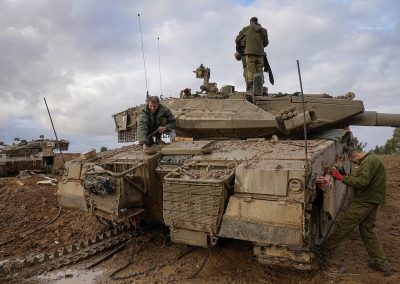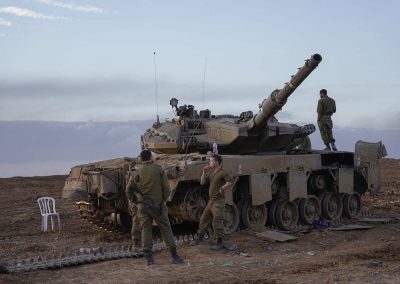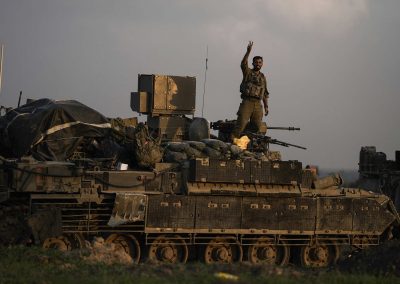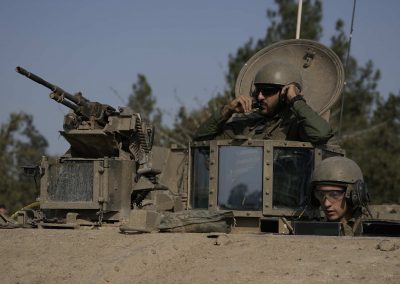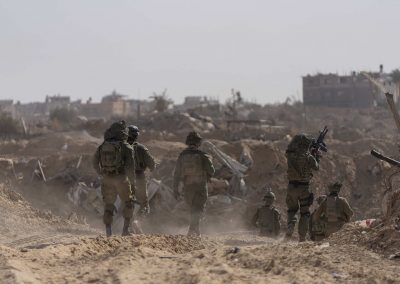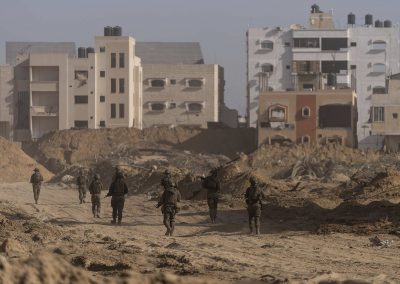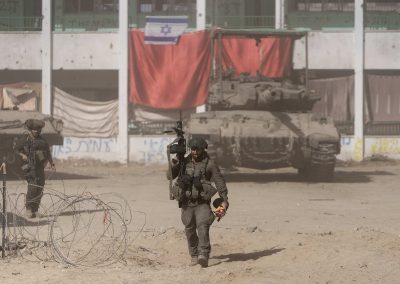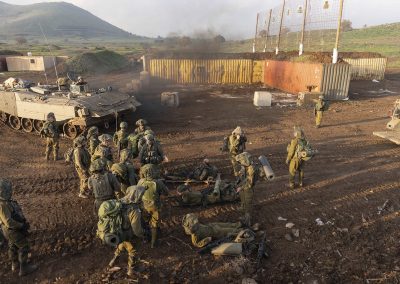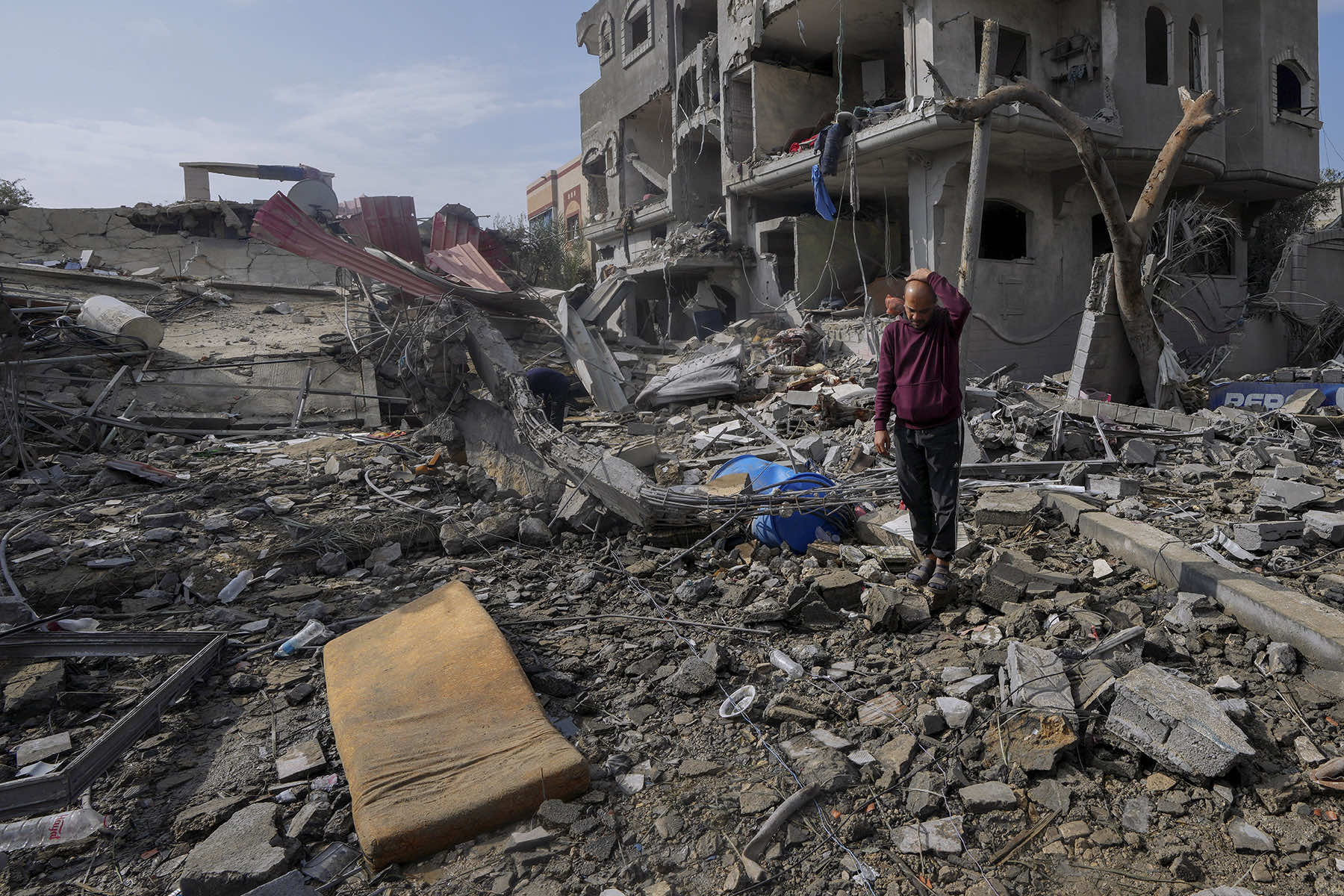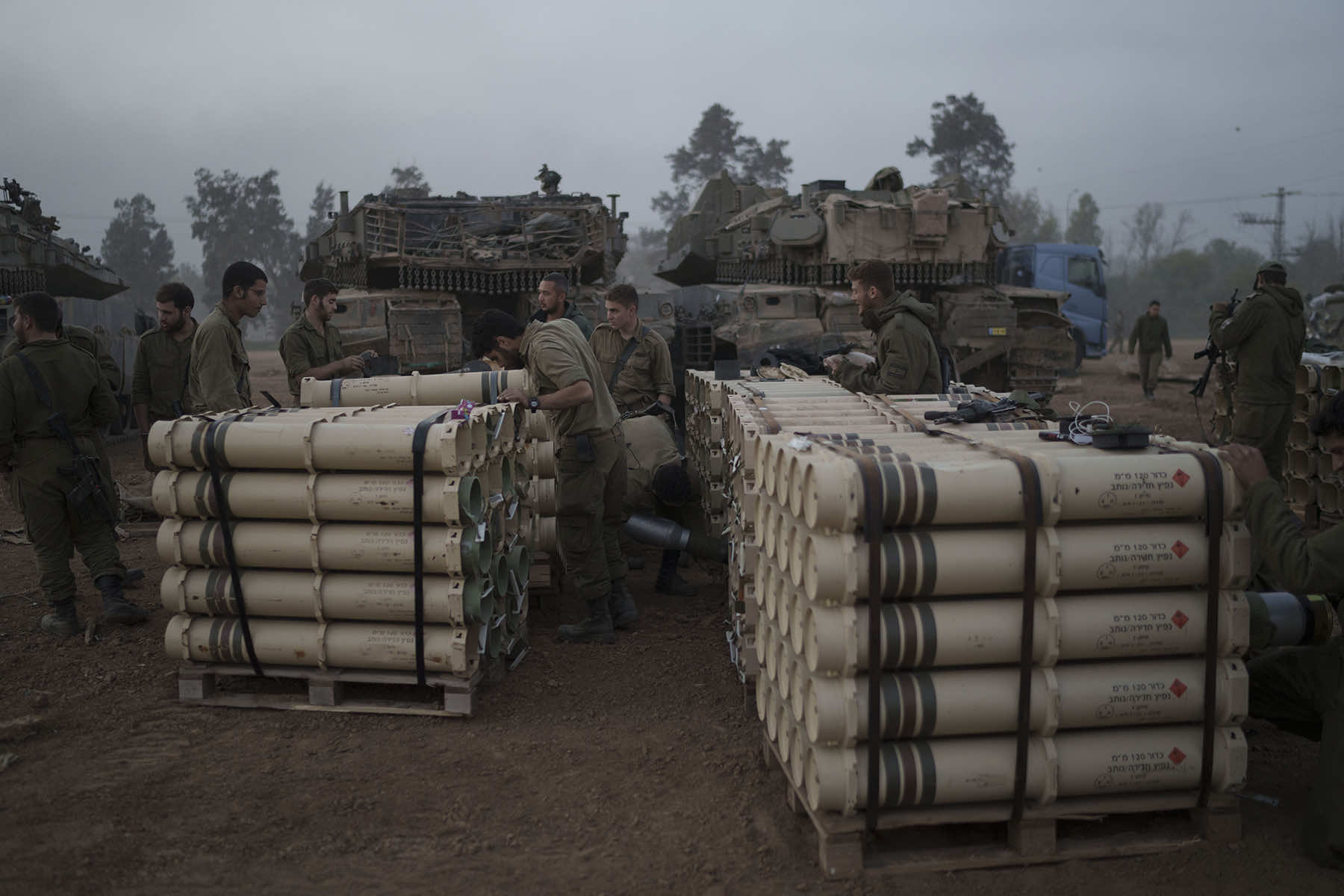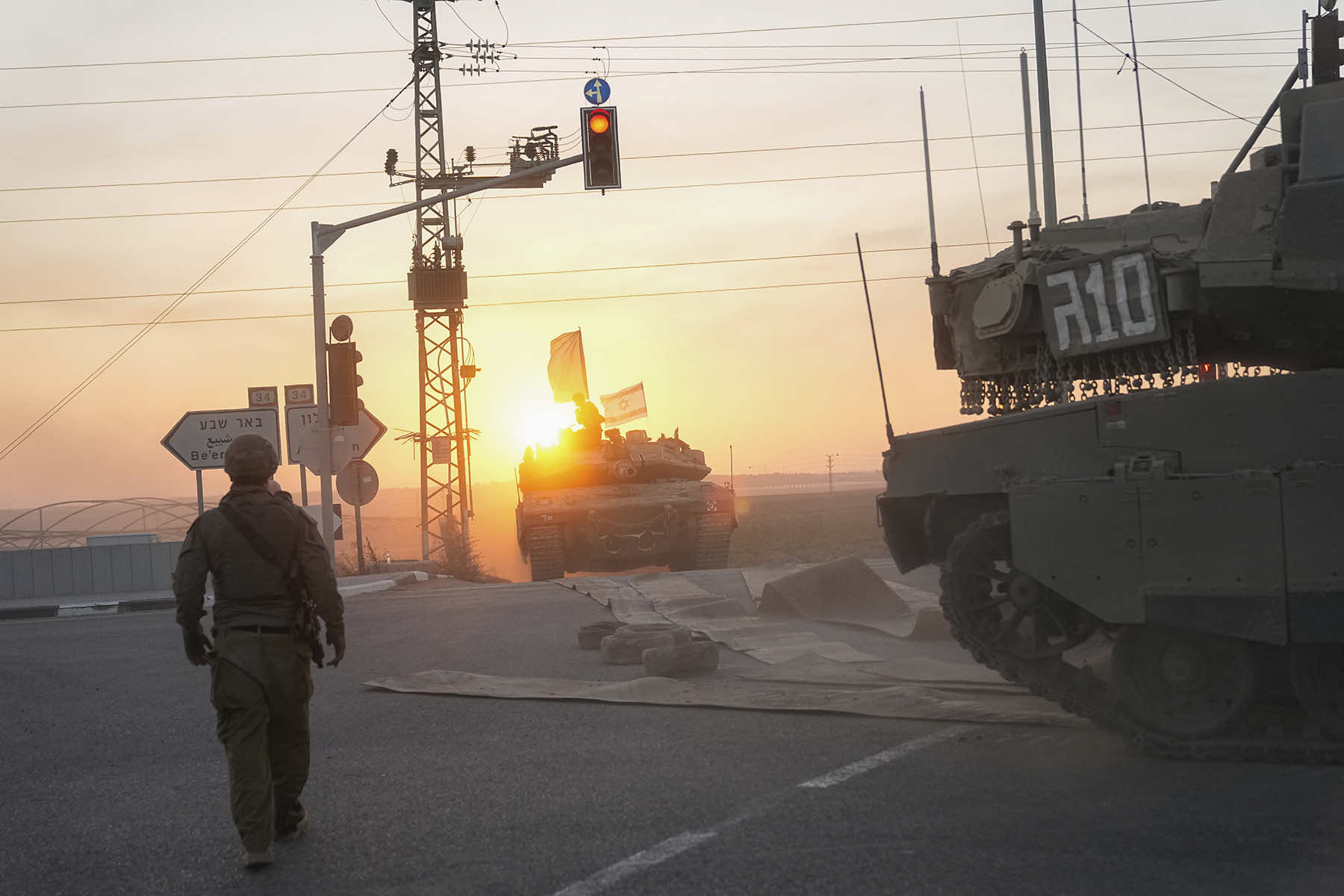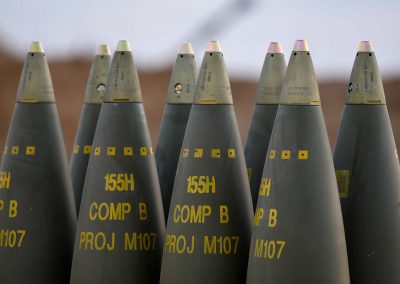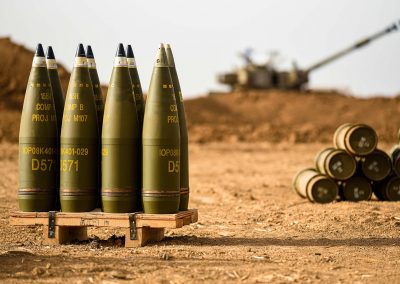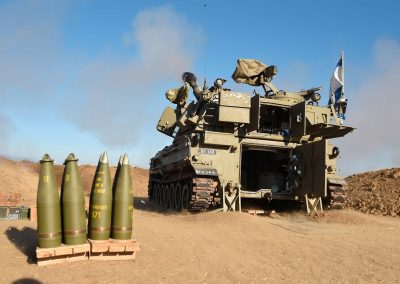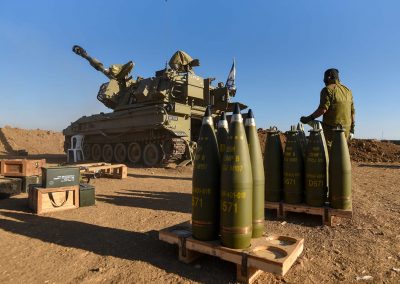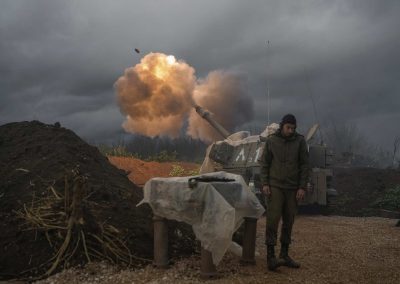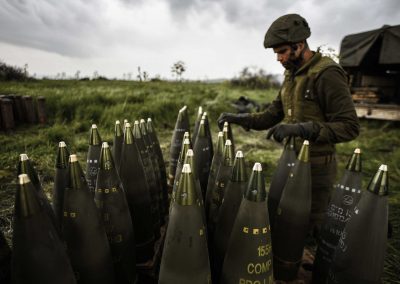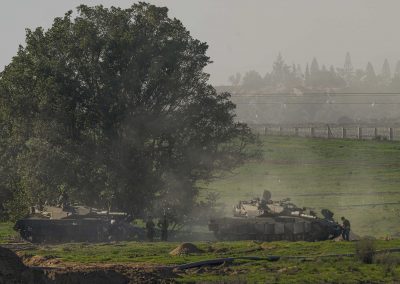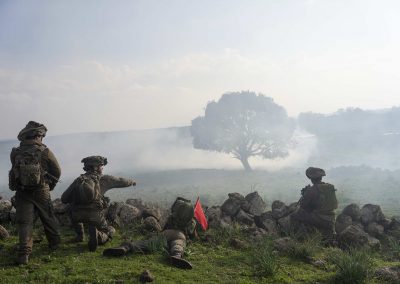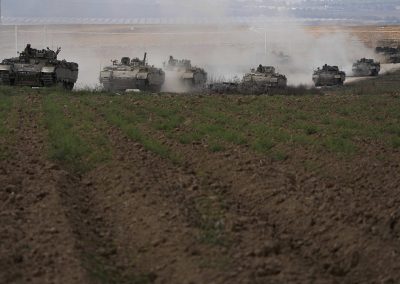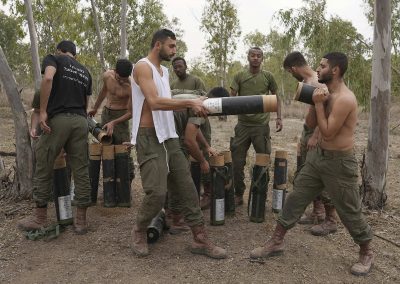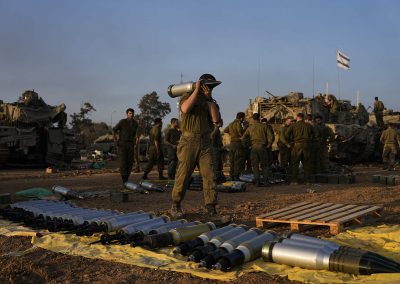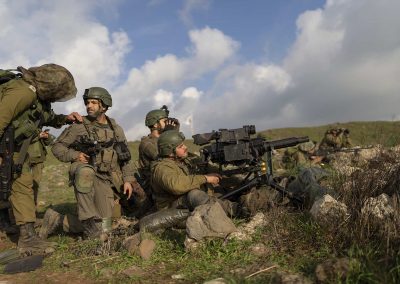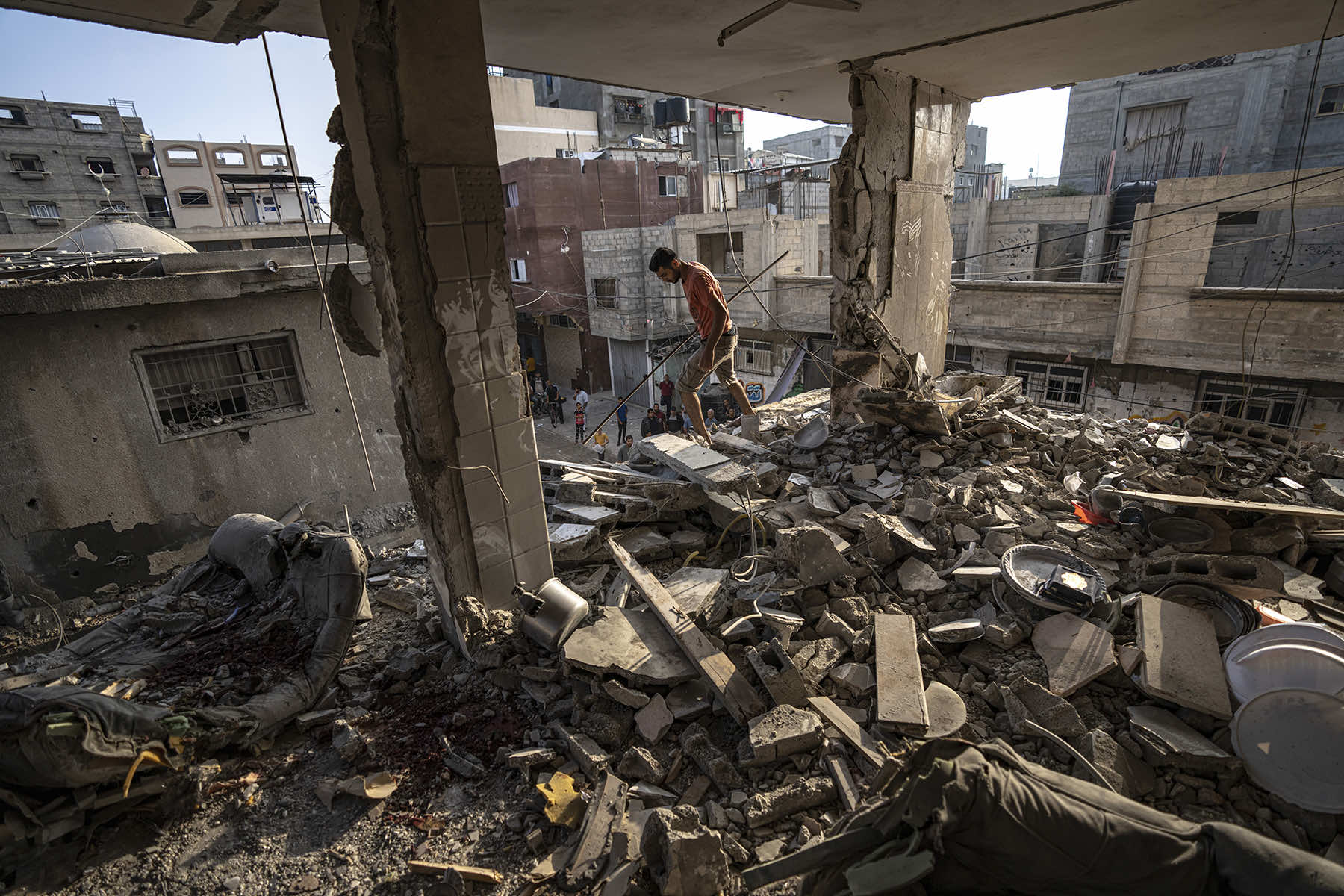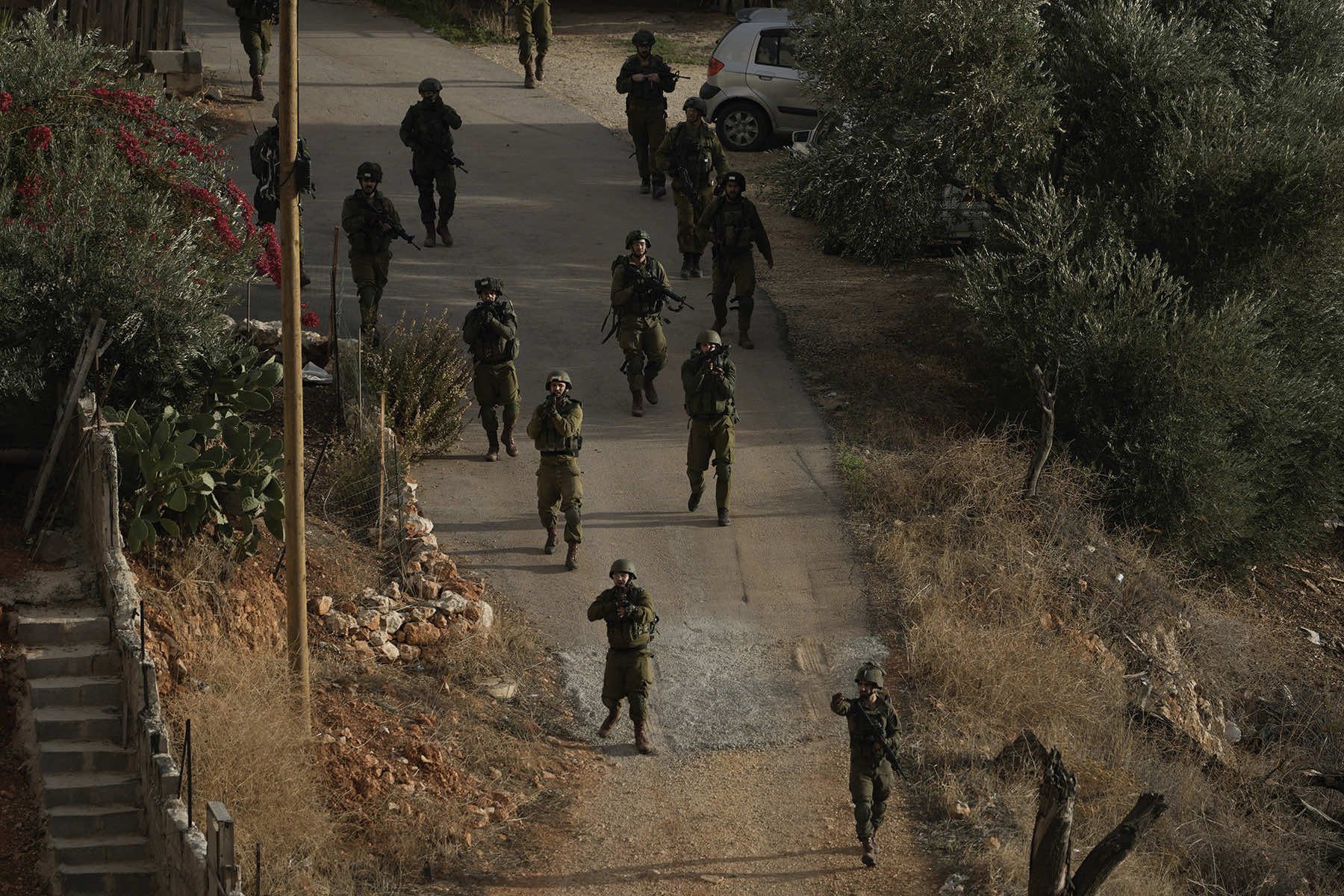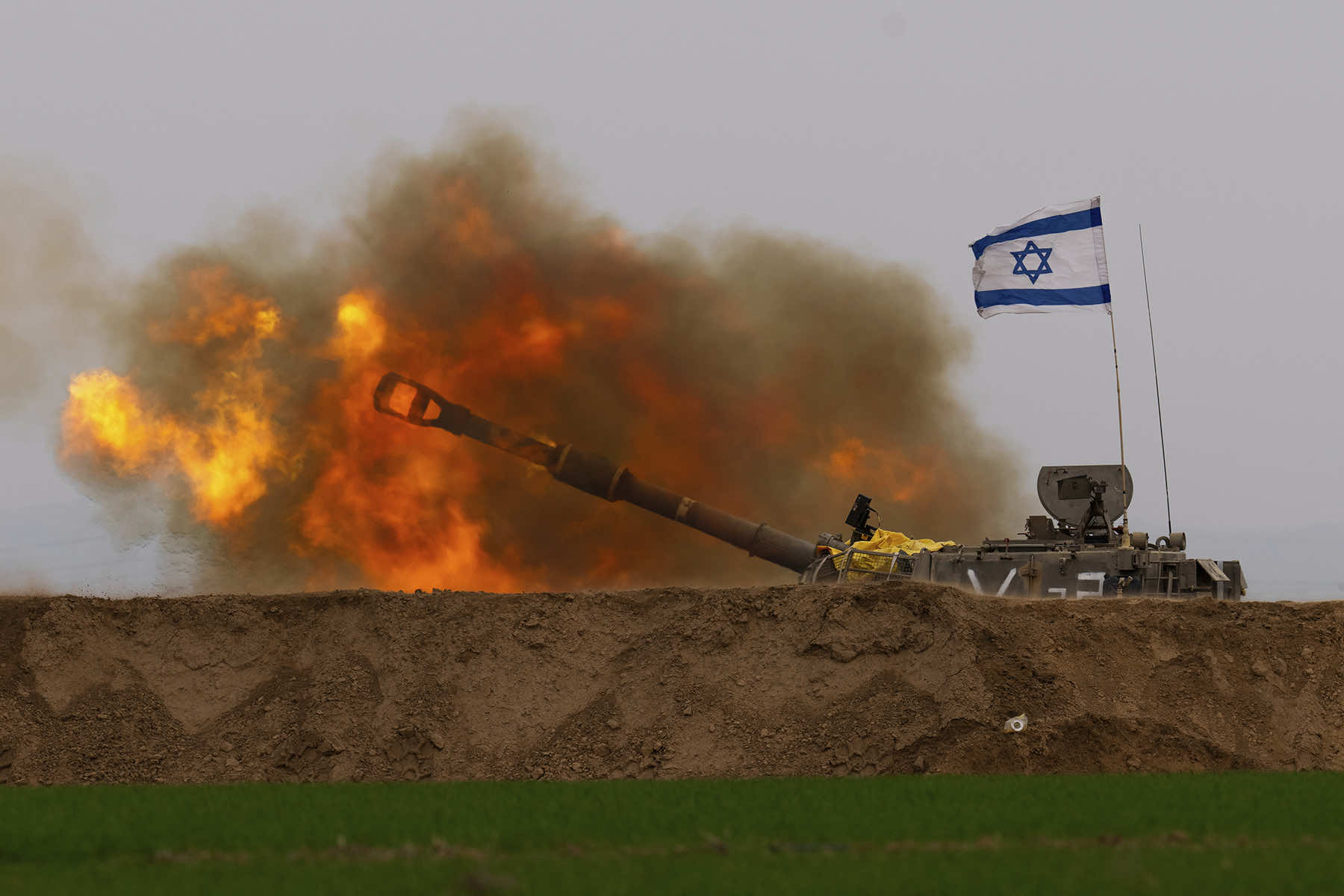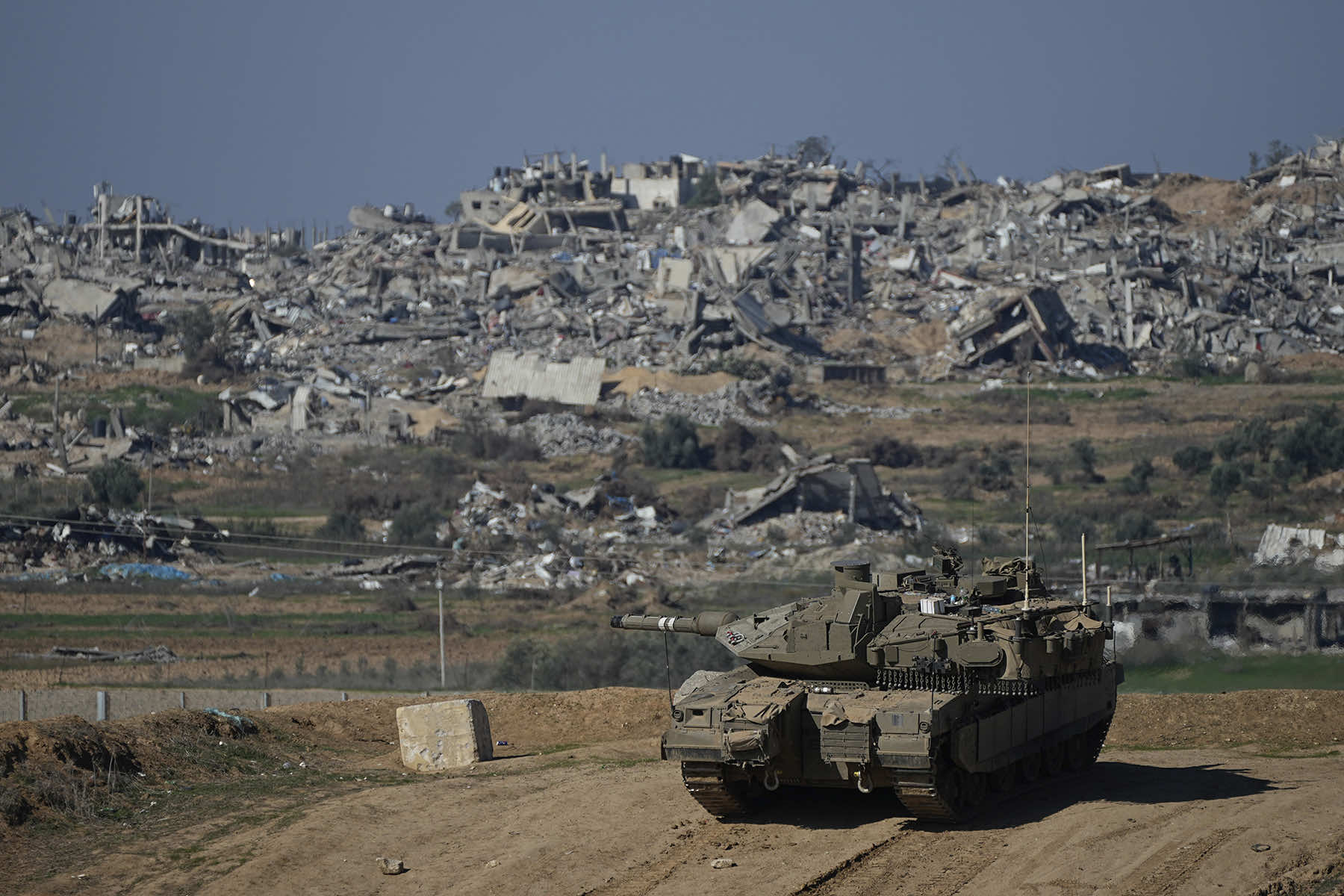
GRAPHIC PHOTO WARNING: This gallery contains news images from war that some viewers may find disturbing.
January 14 marks 100 days that Israel and Hamas have been at war. The conflict already is the longest and deadliest between Israel and the Palestinians since Israel’s establishment in 1948, and the fighting shows no signs of ending.
Israel declared war in response to Hamas’ unprecedented cross-border attack on October 7 in which the Islamic militant group killed some 1,200 people, mostly civilians, and took 250 others hostage. It was the deadliest attack in Israel’s history and the deadliest for Jews since the Holocaust.
Israel responded with weeks of intense airstrikes in Gaza before expanding the operation into a ground offensive. It says its goal is to crush Hamas and win the release of the more than 100 hostages still held by the group.
The offensive has wrought unprecedented destruction upon Gaza. But more than three months later, Hamas remains largely intact and hostages remain in captivity. The Israeli military expects the war will stretch on throughout 2024. Here are five takeaways from the first 100 days of a conflict that has upended the region.
ISRAEL WILL NEVER BE THE SAME
The October 7 attack blindsided Israel and shattered the nation’s faith in its leaders. While the public has rallied behind the military’s war effort, it remains deeply traumatized. The country seems to be reliving Oct. 7 — when families were killed in their homes, partygoers gunned down at a music festival and children and older people abducted on motorcycles — every day.
Posters of the hostages who remain in Hamas captivity line public streets, and people wear T-shirts calling on leaders to “Bring Them Home.”
Israeli news channels devote their broadcasts to round-the-clock coverage of the war. They broadcast nonstop tales of tragedy and heroism from October 7, stories about hostages and their families, tearful funerals of soldiers killed in action, and reports from Gaza by correspondents smiling alongside the troops.
There is little discussion or sympathy over the skyrocketing death toll and deteriorating humanitarian situation in Gaza. Plans for postwar Gaza are rarely mentioned.
One thing has remained constant. While chastened Israeli security officials have apologized and signaled that they will resign after the war, Prime Minister Benjamin Netanyahu remains firmly entrenched.
Despite a sharp drop in his public approval ratings, Netanyahu has resisted calls to apologize, step down, or investigate how the complete failure of his apartheid-style cost so many Israeli lives. Netanyahu, who has led the country with an authoritarian grip for almost all of the past 15 years, borrowed a political tactic of diversion from disgraced ex-president Trump. Netanyahu said there would be a time for investigations after the war, but critics argue that Netanyahu has an incentive to keep the war going perpetually in some form.
Historian Tom Segev said the war will shake the country for years, and perhaps generations, to come. He said the security failures of October 7, along with Netanyahu’s unwillingness and inability to bring the hostages home, have fomented a widespread feeling of betrayal and lack of faith in the government.
“Israelis like their wars to go well. This war doesn’t go so well,” he said. “Lots of people have the feeling that something very, very deep is wrong here.”
GAZA WILL NEVER BE THE SAME
Conditions before October 7 were already difficult in Gaza after a stifling blockade imposed by Israel and Egypt following Hamas’ takeover in 2007. Today, the territory is unrecognizable.
Experts say the Israeli bombing is among the most intense in modern history. Gaza health authorities say the death toll already has eclipsed 23,000 people, roughly 1% of the Palestinian territory’s population. Thousands more remain missing or badly wounded.
Over 80% of the population has been displaced, and tens of thousands of people are now crammed into sprawling tent camps on small slivers of space in southern Gaza that also come under Israeli fire.
Jamon Van Den Hoek, an Oregon State University mapping expert, and colleague Corey Scher of the City University of New York’s Graduate Center, estimate that roughly half of Gaza’s buildings have likely been damaged or destroyed, based on satellite analysis.
“The scale of likely damage or destruction across Gaza is remarkable,” Van Den Hoek wrote on LinkedIn.
The human cost is equally mind-boggling. The United Nations estimates that about one-quarter of Gaza’s population is starving. Just 15 of Gaza’s 36 hospitals are partially operational, according to the U.N., leaving the medical system close to collapse. Children have missed months of school and have no prospects for returning to their studies.
“Gaza has simply become uninhabitable,” wrote Martin Griffiths, the U.N.’s humanitarian chief.
IT IS ALL CONNECTED
The war has rippled across the entire Middle East, threatening to escalate into a broader conflict pitting a U.S.-led alliance against Iranian-backed militant groups.
Almost immediately after the Hamas attack, Iranian-backed Hezbollah militants in Lebanon began striking Israel, triggering Israeli retaliatory attacks.
The back-and-forth fighting between Israel and Hezbollah has not erupted into a full-blown war. But it has come perilously close, most recently after a Jan. 2 airstrike blamed on Israel that killed a top Hamas official in Beirut. Hezbollah responded with heavy barrages on Israeli military bases, while Israel has assassinated several Hezbollah commanders in targeted airstrikes.
At the same time, Iranian-backed Houthi rebels in Yemen have carried out a series of attacks on civilian cargo ships in the Red Sea. Meanwhile, Iranian-backed militias have attacked U.S. forces in Iraq and Syria.
The United States has dispatched warships to the Mediterranean and Red Seas to contain the violence. The U.S. and British militaries bombed more than a dozen Houthi targets in Yemen on January 11. The Houthis vowed to retaliate, raising the prospect of an even wider conflict.
ISRAEL CANNOT IGNORE THE PALESTINIANS
Throughout his time in office, Netanyahu has repeatedly attempted to sideline the Palestinian issue.
He has rejected various peace initiatives, dismissed the internationally recognized Palestinian Authority as weak or irrelevant, and promoted policies that left Palestinians divided between rival governments in Gaza and the West Bank.
Instead, he has tried to normalize relations with other Arab countries in hopes of isolating the Palestinians and pressuring them to accept an arrangement that falls short of their dreams of independence. Just before October 7, Netanyahu was boasting of efforts to forge ties with Saudi Arabia.
The Hamas attack, along with a spike in violence in the West Bank, have put the Israeli-Palestinian conflict back on center stage. The war now tops the newscasts worldwide, has prompted four visits by Blinken to the region, and resulted in a genocide case against Israel in the U.N. World Court.
The Saudis have revived the possibility of establishing ties with Israel, but only if this included the establishment of an independent Palestinian state.
“The painful developments of the last 100 days have proven beyond doubt that the Palestinian issue and the Palestinian people cannot be ignored,” said Nabil Abu Rudeineh, spokesperson for Palestinian President Mahmoud Abbas.
NETANYAHU BLOCKS ANY POSTWAR PLAN
As the war drags on and the death toll mounts, there is no clear path for when the fighting will end or what will follow. Netanyahu has said that Hamas can play no part in Gaza’s future. Hamas says that is an illusion.
The U.S. and the international community want a revitalized Palestinian Authority to govern Gaza, and steps toward a two-state solution. Israel objects.
Netanyahu wants to maintain a long-term military occupation in Gaza. The U.S. does not want Israel to seize the territory.
Reconstruction will take years. It is unclear who will pay for it or how the required materials will enter the territory through its limited crossings. And with so many homes destroyed, where will people stay during this lengthy process?
“Our lives 100 days ago was excellent. We had cars and houses,” said Halima Abu Daqa, a Palestinian woman who was displaced from her home in southern Gaza and is now living in a tent camp. “We have been deprived of everything. Everything has changed and nothing remains.”
BY THE NUMBERS
TOTAL DEATHS
• Number of Palestinians killed in Gaza: 23,708
• Number of people killed in Israel: Over 1,300
• Number of Palestinians killed in the West Bank: 347
CIVILIANS
Civilians killed in Gaza: The civilian toll of the war is unknown. It is believed that two-thirds of those killed in Gaza are women and minors.
• Number of civilians killed in Israel on October 7: 790
• U.N. staff killed in Gaza: 148
• Health workers killed in Gaza: at least 337
• Journalists killed in Gaza: 82
SOLDIERS/MILITANTS
• Number of Israeli soldiers killed on October 7: 314
• Number of militants killed by Israel: Over 8,000
• Number of Israeli soldiers killed in the Gaza ground offensive: 187
• Number of Israeli soldiers killed on the northern front: 9
• Number of Israeli soldiers killed by friendly fire or “accidents” in Gaza and the north: 29
DESTRUCTION/HUMANITARIAN SITUATION IN GAZA
• Percentage of Gaza’s buildings likely damaged/destroyed: 45-56%
• Hospitals in Gaza partially functioning: 15/36
• Palestinian civilians facing “catastrophic hunger and starvation”: 576,600 (26% of the population)
• Percentage of school buildings in Gaza damaged: over 69%
• Mosques damaged: 142
• Churches damaged: 3
• Ambulances damaged: 121
• Students out of school: 625,000 (100% of students)
INJURIES
• Palestinians injured in Gaza: 60,005
• Palestinians injured in West Bank: more than 4,000
• Total Israeli injuries: 12,415
• Israeli soldiers injured in ground offensive: 1,085
• Israeli soldiers injured since October 7: 2,496
DISPLACEMENT
• Number of Palestinians displaced in Gaza: 1.8 million (85% of Gaza’s population)
• Number of Israelis displaced from northern and southern border communities: 249,263 (2.6% of the population)
• Number of West Bank Palestinians displaced: 1,208
HOSTAGES/PRISONERS
• Hostages taken by Hamas on October 7: around 250
• Hostages released: 121
• Hostages remaining in the strip: 136
• Hostages who were killed or died in Hamas captivity: 33
• Palestinian prisoners released during weeklong pause in fighting: 240
MUNITIONS
• Number of rockets launched toward Israel: 14,000
Josef Federman, Julia Frankel, AP Staff, and MI Staff
Associated Press
JERUSALEM
Abed Khaled (AP), Adel Hana (AP), Ariel Schalit (AP), Hatem Ali (AP), Hatem Moussa (AP), Leo Correa (AP), Majdi Mohammed (AP), Mohammed Dahman (AP), Mohammed Hajjar (AP), Ohad Zwigenberg (AP), Tsafrir Abayov (AP), Victor R. Caivano (AP), IDF (via AP), and Gal Rotem (via Shutterstock)

